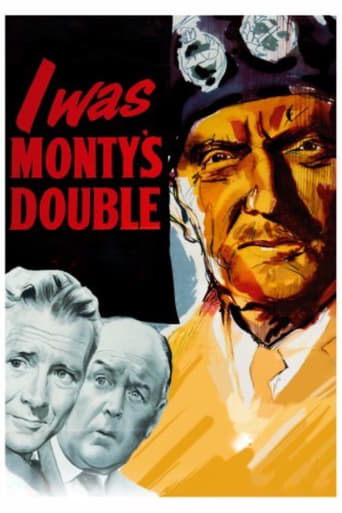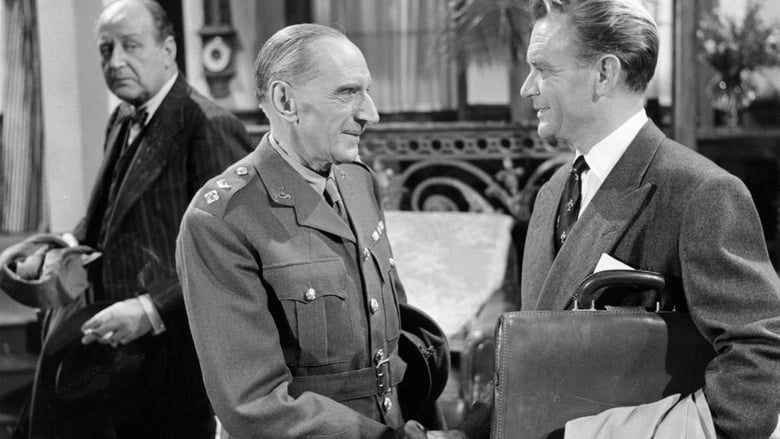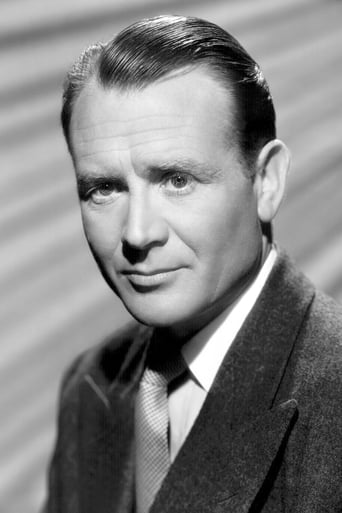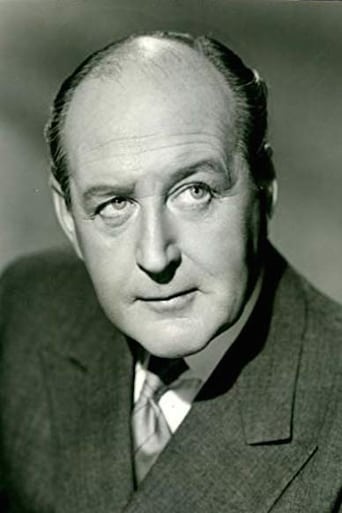

I Was Monty's Double (1958)
The incredible but true story of how an impersonator was recruited to impersonate General Montgomery to mislead the German's about his intentions before the North Africa campaign.
Watch Trailer
Cast


Reviews
Very Cool!!!
Simply Perfect
If you don't like this, we can't be friends.
Did you people see the same film I saw?
"I Was Monty's Double" dramatises a remarkable true story from World War II. M. E. Clifton James, a Lieutenant serving with the Royal Army Pay Corps (the British Army's financial department) and an actor in civilian life, was recruited by military intelligence to impersonate General Bernard Montgomery, to whom he bore a close resemblance. The reason was that the Allies were attempting to deceive the Germans by spreading false rumours that the D-Day landings would take place in the South of France rather than Normandy. To make such rumours credible it was essential that the Germans should be led to believe that Montgomery, Britain's leading General, was in North Africa, the obvious launch-pad for any such invasion. At the time it was essential that this scheme be kept secret, and Clifton James received no official recognition for his role. Ten years later, when the ban on public discussion of wartime operations had expired, he wrote an autobiography which revealed the story and became a best-seller. In the film he plays two roles- himself and Montgomery. This, unfortunately, means that one key scene, when Monty meets his double in order to encourage him, cannot be shown in the film. With modern computer trickery it would today be quite easy to have the same actor playing two different characters in the same scene, and even in 1958 it would probably have been technically possible. ("The Parent Trap", made by Disney only three years later, features several scenes in which Hayley Mills plays identical twin sisters and therefore appears to be in two places at once). Doubtless, however, the makers of a low-budget British film like this one did not have the same financial resources available to them as the Disney organisation. In real life Clifton James was discovered by the actor David Niven, who was serving as a British Army officer at the time, but he does not appear in the film and no mention is made of his role. (Perhaps the producers couldn't afford him- by 1958 he had become a major international star and doubtless could command large fees). Instead credit for the operation is given to two fictitious intelligence officers, Colonel Logan and Major Harvey, played by Cecil Parker and John Mills. Mills was a regular star of British war movies, generally playing officer types. "How-we-won-the-war" movies about true wartime episodes were a standard feature of the British cinema in the fifties, and varied greatly in quality. Most of these, however, featured combat operations of one type or another. "I Was Monty's Double" is a war film of a rather different type. Its one descent into standard heroics comes at the end, when Harvey has to foil an attempt by German commandos to kidnap Clifton James in the mistaken belief that he is the real Monty. (This is also the film's one major departure from historical facts. Although the Germans did have plans to assassinate Montgomery while he was in Alexandria, these were never put into effect). For most of its length the film's dramatic tension derives from Clifton James' own inner struggle to conquer his doubts and fears. Although he has little difficulty imitating Montgomery's voice and mannerisms, he finds it more of a struggle to convey the great man's personality. One particular difficulty he faces is that while he is both a heavy drinker and smoker, Montgomery was famously teetotal and a militant non-smoker, so he can never publicly be seen with a drink or a cigarette in his hand. It is strongly implied in the movie that Clifton James was not a great success as a theatre actor and spent most of his career as an understudy. This film, however, was to provide him with one great success near the end of his life. (He was to die five years later). If not quite in the class of something like "The Dambusters", it is one of the better "How-we-won-the-war" movies, and gives an insight into the work of the vital role of military intelligence, something often overlooked in the cinema. 7/10
I was particularly tickled by the sight of James,as himself,during his training in a sequence where he observes himself,as Monty in order to study his demeanour,walk & mannerisms, before the real masquerade. Now that's acting! The news theatre at the end where Mills & James watch the newsreel was clearly the former Times by Baker St underground & close to Madame Tussauds. Would make a good double feature to support "The Man Who Never Was" - a similar intelligence con to mislead the Nazis on plans for the invasion of Europe. Probably the biggest laugh comes from the icy and withering remarks of John Le Mesurier (as James' adjutant)on his contempt for the acting profession, in a brief early scene where he initially reports for "duty" as a lowly corporal.
It's hard not to imagine that Bryan Forbes who wrote the script for this 1958 film was not influenced by the James Bond character who first appeared in the Ian Fleming book "Casino Royale" published in England in 1953. As the first Bond film was not released until 1962, the character John Mills plays --cheeky, disrespectful of authority, as adept with women as he is in intelligence work-- is either a predecessor to 007 or an affectionate borrowing from Fleming's novel. Up until then, British men were usually depicted on screen as stiff-upper lip, decent chaps who did their jobs without complaining; surely never distracted from defending the Empire by a pretty face. Mills, with his enormous charm and good looks, introduced a new type of Brit to cinema audiences --sexy, funny and sometimes outrageous-- a character which Sean Connery was to play to perfection many years later.
As improbable as it seems, Hitler sent a panzer division and 50,000 troops to the south of France just before the Normandy invasion. Hitler did it because he was so impressed by the performance of a second-string actor who up to May, 1944, was most proud of his lead role as Charley's Aunt in British regional rep. In this case, however, M. E. Clifton-James was playing Bernard Montgomery. Clifton-James bore an uncanny resemblance to the field marshall. When MI5 realized this, they organized one of the great WWII cons. Up until then, Clifton-James had been a middle-aged, low-ranking officer, in for the duration, who'd wound up in the Royal Army Pay Corps. He was pulled out of that, assigned for a few days to Montgomery's staff posing as an enlisted man so he could secretly study Montgomery's mannerisms and style, then sent as Montgomery first to Gibraltar and then to North Africa. Once there, posing as the field marshall, he attended high-level meetings, reviewed the troops, gave inspiring speeches...and all the while MI5 was insuring that his "secret" visits were being leaked to German intelligence. Would the Germans take the bait and believe Monty was prepping the field for a major landing at the underbelly of Europe? MI5 and Clifton-James had their answer when German fighters attacked the transport carrying the false Monty to another North African location. Then German commandos arriving by sub managed to kidnap "Montgomery" and move him to the beach before British soldiers (in the movie, two good-looking officers, one played by John Mills) daringly rescue the actor, who by now had fainted. All true? Well, supposedly, most of it. I'd take the kidnapping and the rescue with a grain of salt. Clifton-James after the war wrote his auto-biography titled "I Was Monty's Double" and it sold briskly. He was 46 during the seven weeks of his training and impersonation. MI5 kept him in seclusion in Cairo until after the Normandy invasion, then returned him to duty in England in the Pay Corps. He probably never had a better role, and certainly never a more important one, in his life. He was 60 when the movie was made and died five years later. He carries off playing himself very well. He holds his own with John Mills as the fictional Major Harvey and Cecil Parker as the fictional Colonel Logan. Parker runs the scam; Mills makes sure Clifton-James doesn't lose his nerve and stays with him during training and in North Africa. This being a sort-of Mills war movie, Mills is cheery, competent and loaded with upper-class confidence, either when trying to rekindle an old love while on leave or gunning down a large group of tough German commandos. The tone of the movie, with a screenplay by Bryan Forbes, is one of British insouciance, the undertaking of deadly serious actions with under-played bravery and deprecating humor. Some of the humor comes from cracks made by Mills as Major Harvey about actors' vanity. The last 20 minutes of the movie turns into a more standard war story with a midnight beach landing, silent knifings, an attack in the waves and bullets flying on the beach. The movie regains its footing of good cheer at the close. I Was Monty's Double may not be an unknown war classic, but it's a well-made, well-scripted and well-acted movie. M. E. Clifton-James turns out to be a sympathetic and even endearing person, something that would never be said about Montgomery.




